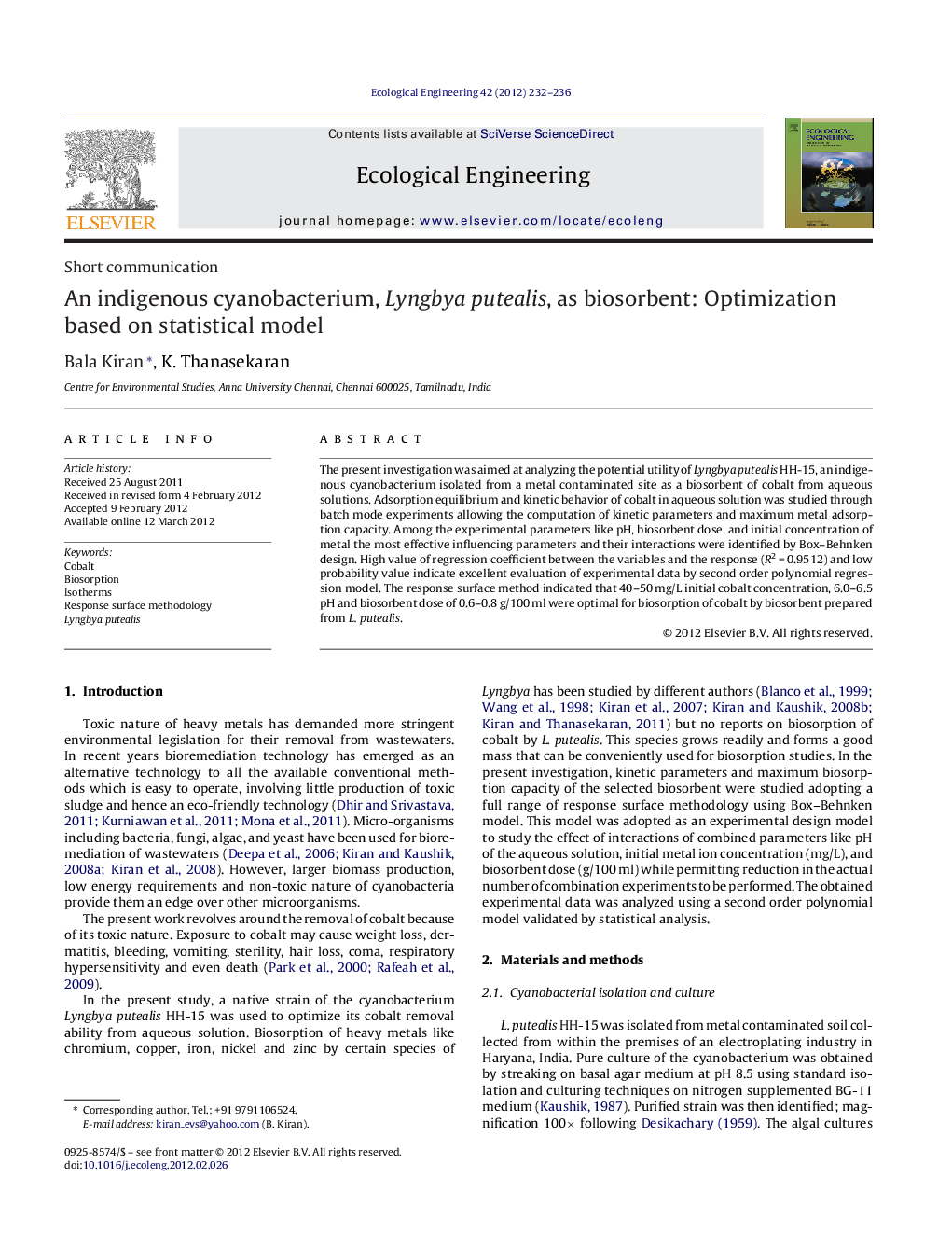| Article ID | Journal | Published Year | Pages | File Type |
|---|---|---|---|---|
| 6302791 | Ecological Engineering | 2012 | 5 Pages |
The present investigation was aimed at analyzing the potential utility of Lyngbya putealis HH-15, an indigenous cyanobacterium isolated from a metal contaminated site as a biosorbent of cobalt from aqueous solutions. Adsorption equilibrium and kinetic behavior of cobalt in aqueous solution was studied through batch mode experiments allowing the computation of kinetic parameters and maximum metal adsorption capacity. Among the experimental parameters like pH, biosorbent dose, and initial concentration of metal the most effective influencing parameters and their interactions were identified by Box-Behnken design. High value of regression coefficient between the variables and the response (R2Â =Â 0.9512) and low probability value indicate excellent evaluation of experimental data by second order polynomial regression model. The response surface method indicated that 40-50Â mg/L initial cobalt concentration, 6.0-6.5 pH and biosorbent dose of 0.6-0.8Â g/100Â ml were optimal for biosorption of cobalt by biosorbent prepared from L. putealis.
Graphical abstractDownload full-size imageHighlights⺠Indigenously isolated cyanobacterial species used for cobalt removal. ⺠Lyngbya putealis isolated from metal contaminated site used as biosorbent. ⺠Box-Behnken design matrix to design the experiments. ⺠Interactive influences of all the operational variables optimized using RSM, a multivariable statistical design.
